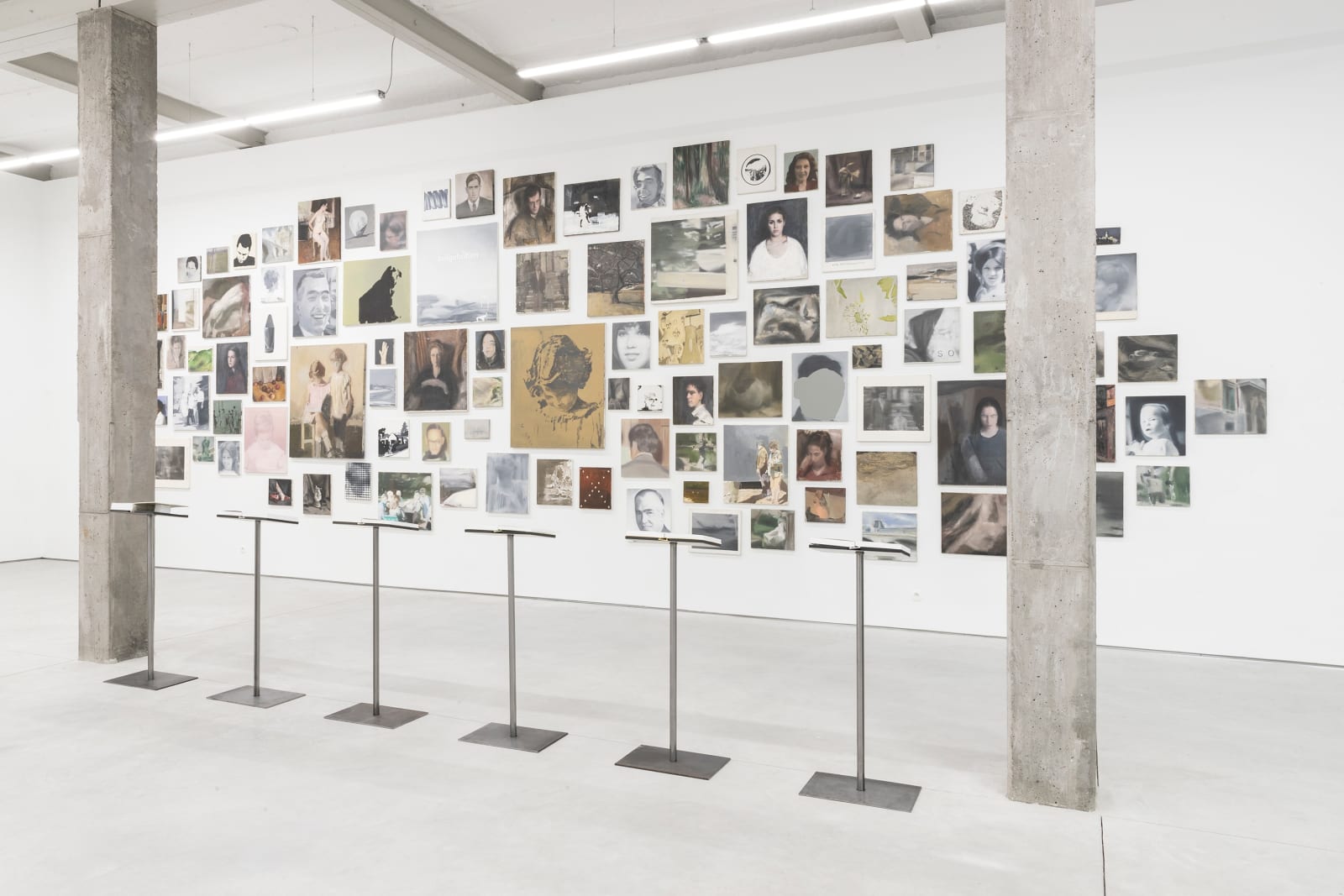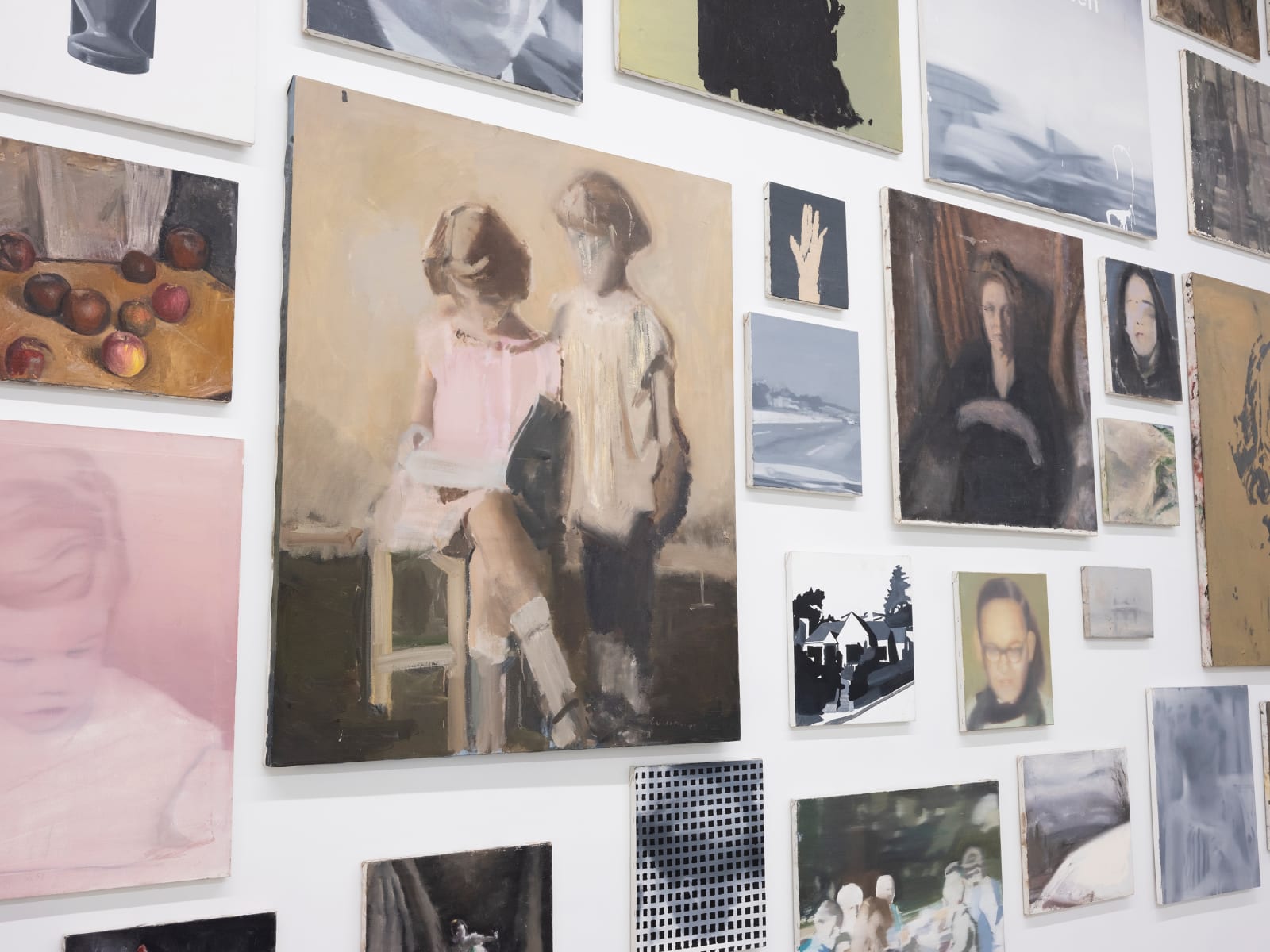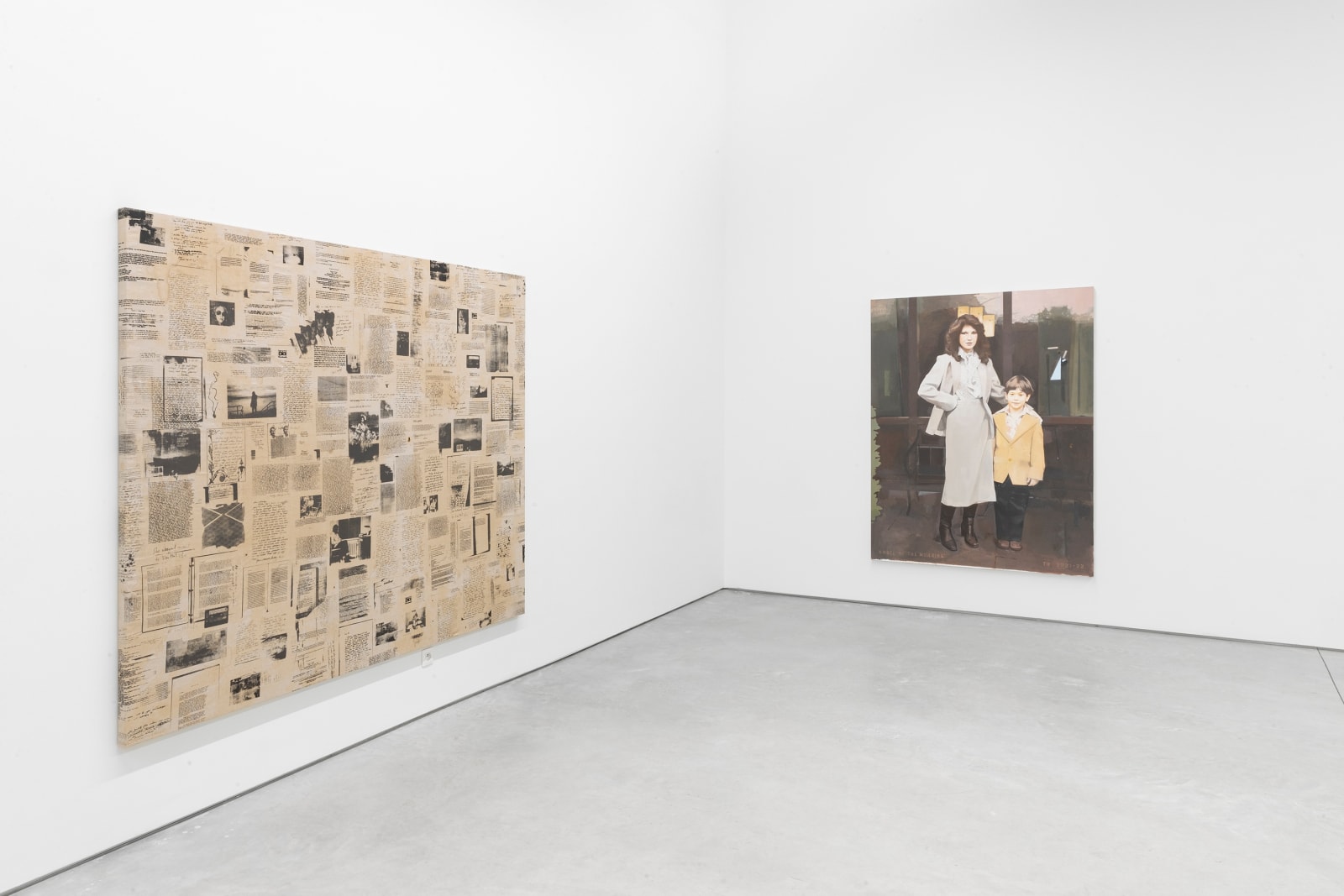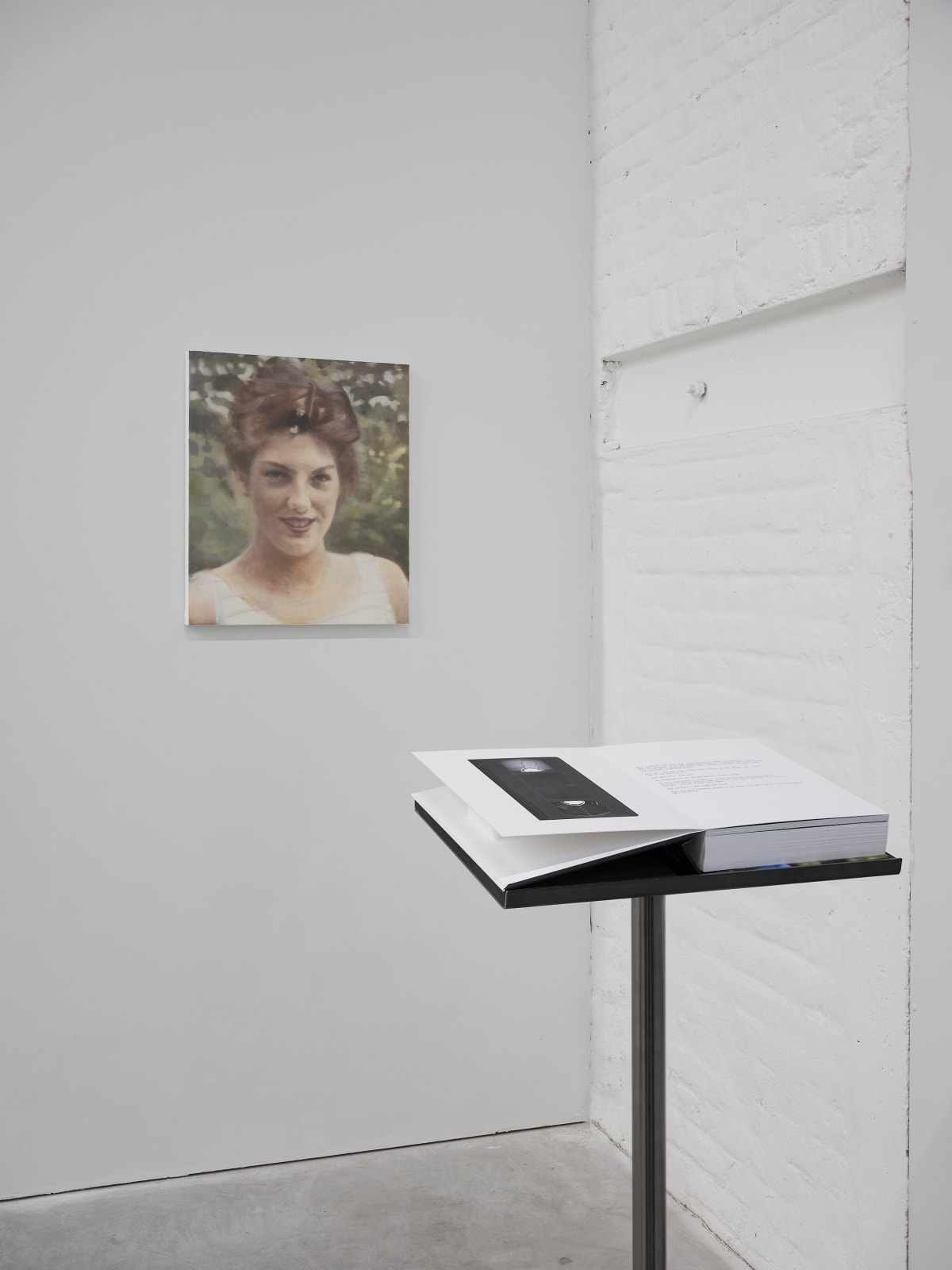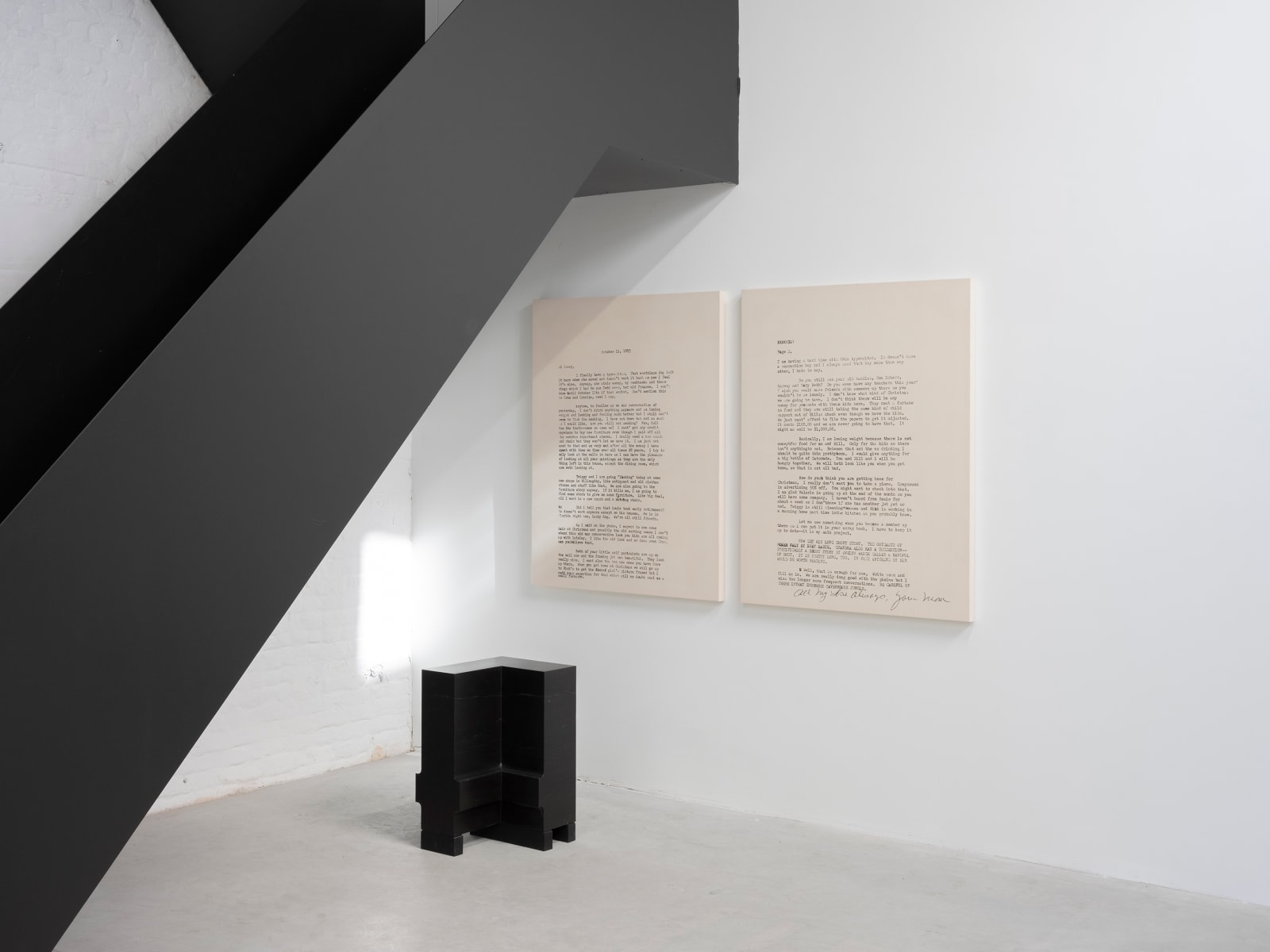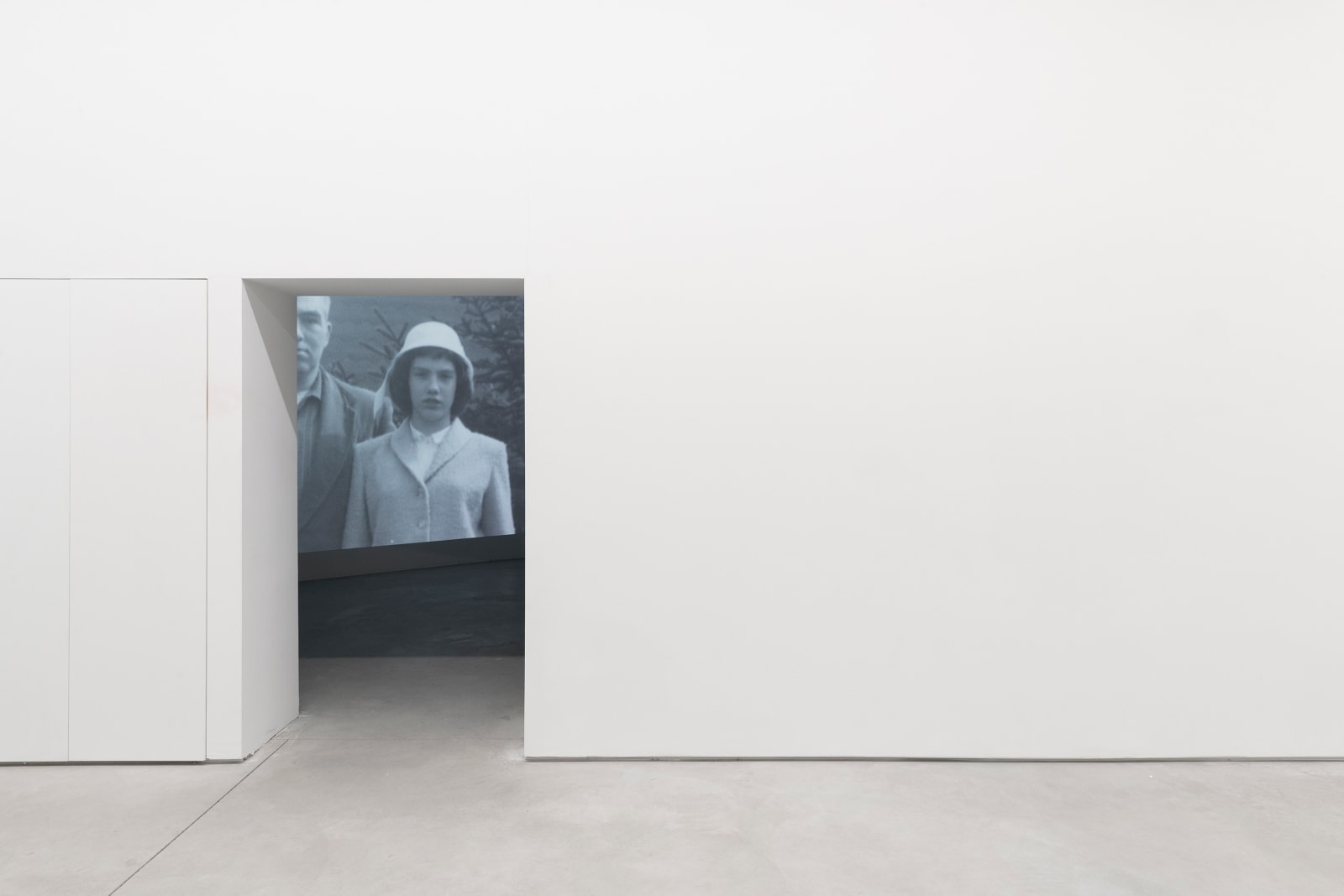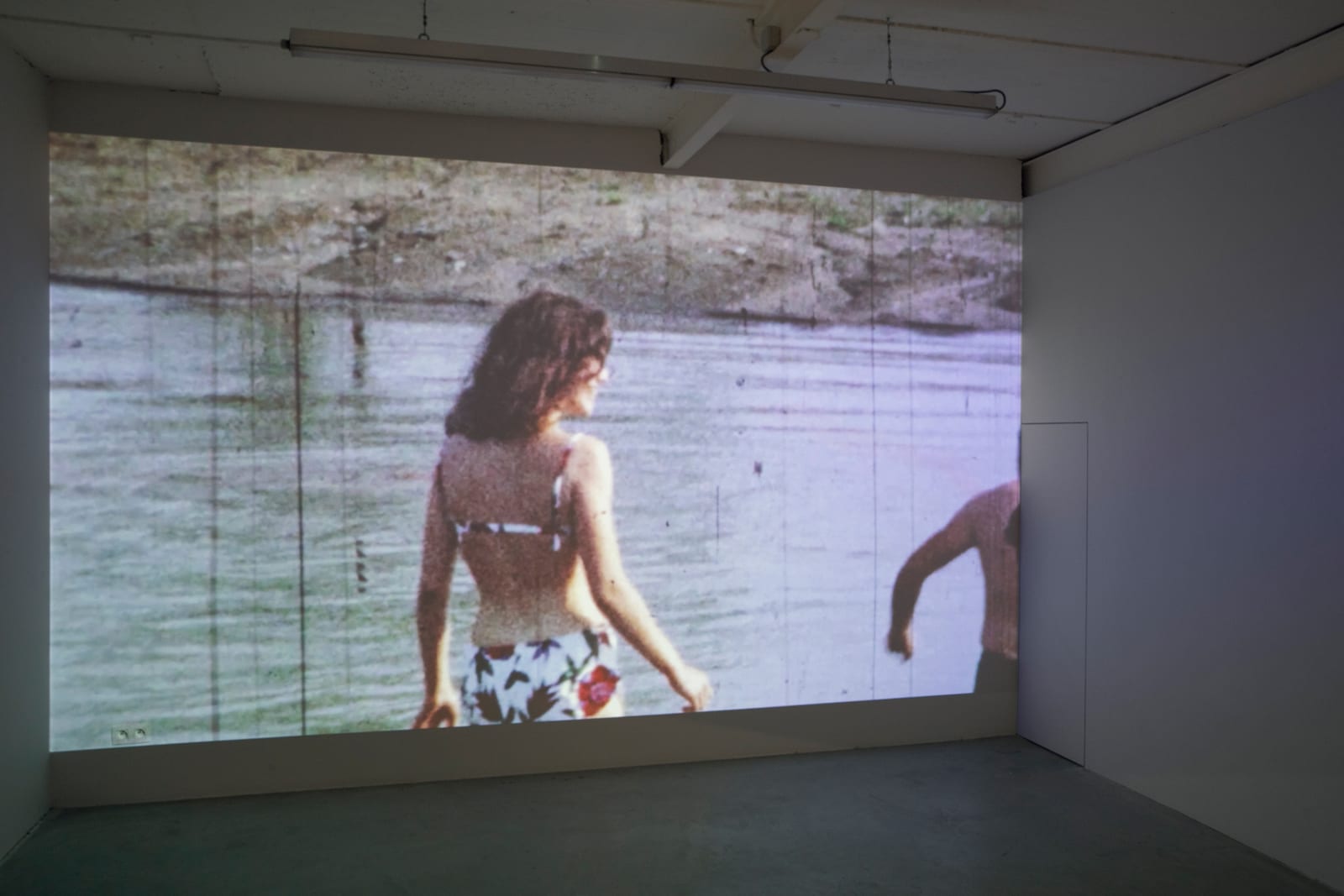TR Ericsson began his career as a portrait painter and has never really stopped making portraits. For many years he traded paint for unconventional materials. For example, the work "Bride," an image of his mother's first wedding currently on view at the Smithsonian Museum of American Art, is made of nicotine. Portraiture is central to his third exhibition at Harlan Levey Projects in Brussels, two of which are durational and inform each other the way a mother does a son and vice versa: One is of Sue and the other of Tom. The former shows a young woman aging, the latter a young man searching for his voice. Both are created over the course of decades. Historically, a portrait was usually of an isolated individual, a likeness executed with varying degrees of skill or accuracy, often, though not exclusively, of the upper classes. With photography, and more than ever our current smartphones and selfie obsession, the portrait has become democratized and digitized. Today, recording a likeness is a rather mundane affair. In response, many artists now often exclude likeness altogether in favor of revealing a deeper and more penetrating interior identity, which Ericsson does with remarkable sensitivity and success.
TR Ericsson: Tom and Sue
Past event


